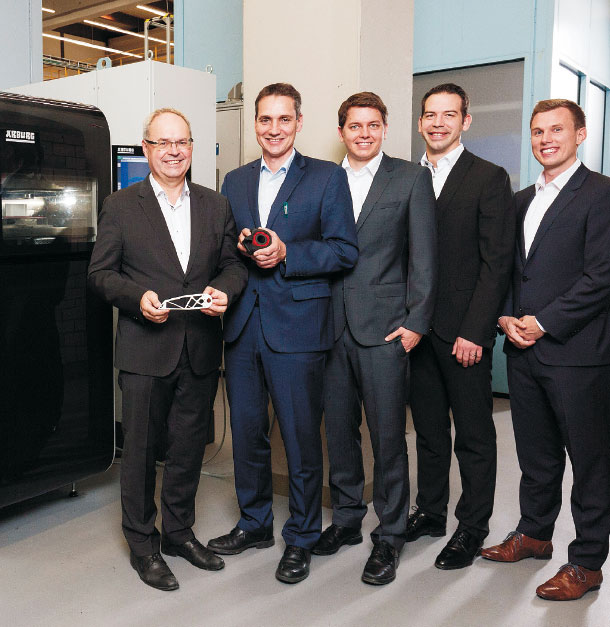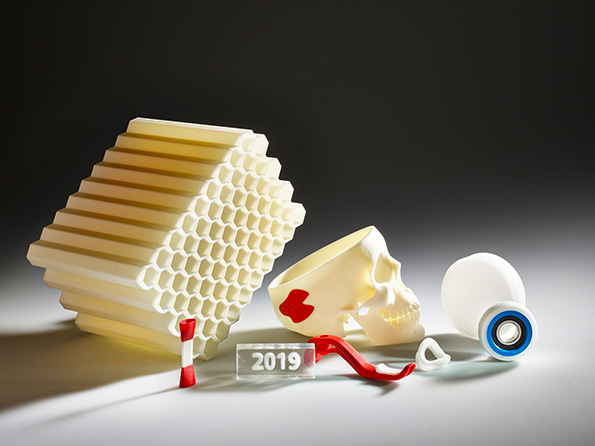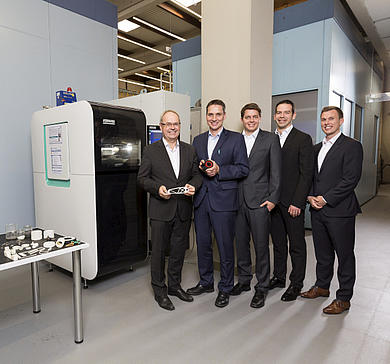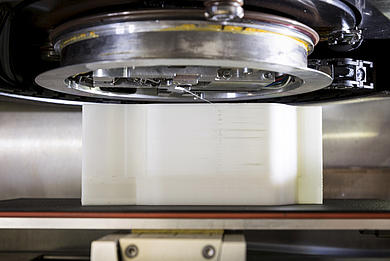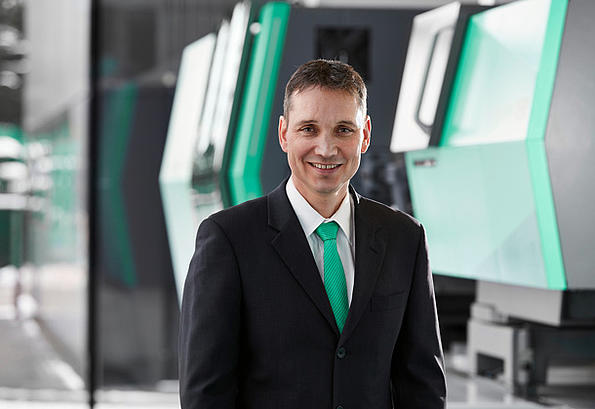Prof. Jürgen Fleischer and Jörg Dittus team up with ARBURG to implement additive manufacturing of fiber-reinforced plastics with continuous fibers. This new production technology could make it easier to customize prostheses in the future.

The first attempts to replace missing body parts with prosthetic devices and thus maintain functionality date back to the Etruscans in antiquity. They used gold wires to attach lost teeth in order to bridge disruptive interdental gaps. Thanks to advances in medical technology, much more complex and functional prostheses and implants are no longer a rarity: such devices replace body parts, like prosthetic legs, or independently take over vital functions within the body, like heart valve implants.
To date, steel and titanium have been the materials of choice when it comes to the load-bearing capacity and biocompatibility of artificial substitutes. Due to the demand for cost-effective production, metallic prostheses are usually produced in large quantities in a mass-compatible geometry. Customized products are associated with considerable additional costs.
"Additive manufacturing is a technological development that is comparatively recent. Being able to help shape such a new field and thus impact the production technology of tomorrow is a great motivation for me"
Researchers Prof. Jürgen Fleischer and Jörg Dittus from KIT's wbk Institute of Production Science, supported by specialists from the mechanical engineering company ARBURG GmbH + Co KG, are using a groundbreaking additive manufacturing technique for fiber-reinforced plastics (FRPs) to create the best conditions for customized medical prostheses and medical products made of printable fiber composites."Additively manufactured fiber-reinforced plastics offer advantages in terms of flexibility and customization due to their material properties. Compared to metal components, we achieve high weight-specific strength and performance," explains Dittus, whose doctoral research focuses on the additive manufacturing of fiber composite components for lightweight construction. Using the proprietary ARBURG Plastic Freeforming (APF) process and a fibre feed unit specially developed for fiber reinforcement, the project partners at the KIT ARBURG Innovation Center at have succeeded in additively manufacturing FRP parts from plastic with so-called continuous fibers made of glass or carbon - 3D printing for fiber-reinforced plastic parts, so to speak.
"The continuous fibers are implemented directly into the component with the help of a fiber feed unit during the layer-by-layer application of the plastic. Until now, industrial-grade processing has only existed for short fibers," says Dittus. "Additive manufacturing with continuous fibers is an understudied field. We have built up the process technology expertise and incorporated it into prototype development." The prototype of the fiber feed unit was integrated into the "freeformer", ARBURG's additive manufacturing system, and is currently undergoing a test phase for process reliability. With a strong partner such as ARBURG and the wide application range of the APF process, numerous plastics and special plastics, specifically for medical technology, are already available as standard granulate.
Additive manufacturing is particularly advantageous whenever components need to be manufactured profitably in customized one-offs or small batches. "We see great potential in the field of medical technology. The goal here is to produce precisely one customized and robust prosthesis in batch size 1 that is optimally adapted to the patient," specifies Prof. Fleischer. Using FRP, it is possible to produce solid functional components from which highly stressable prostheses with low weight can be manufactured. Not only medical technology manufacturers would benefit from this, but above all the patients: Custom-fit prostheses increase wearing comfort and ensure perfect functionality. Martin Neff, department manager for plastic free forming at ARBURG reports: "Some of our customers who use fiber-reinforced materials in injection molding want to offer added value with additive manufacturing. This is because it does not replace established subtractive or injection molding processes but is a useful addition to them." Whether this process will facilitate prototype testing for prostheses in workshops in or even produce marketable prostheses for patients will be determined in the future.

